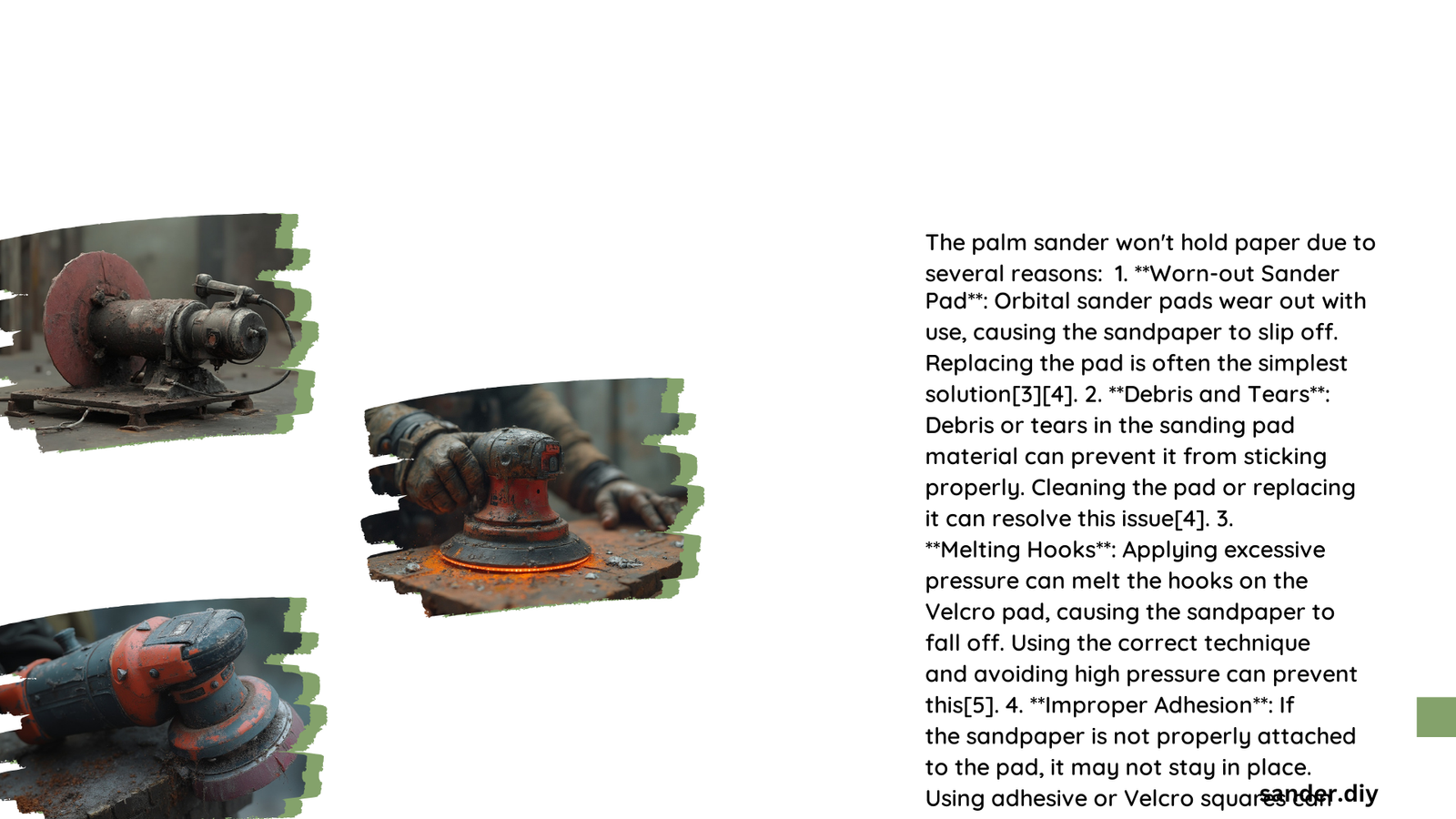When your palm sander struggles to grip sandpaper, it can turn a simple woodworking project into a frustrating experience. Sandpaper detachment isn’t just an inconvenience—it can compromise your work quality, damage your tools, and waste valuable time and resources. Understanding the root causes of why a palm sander won’t hold paper is crucial for maintaining optimal sanding performance and achieving professional-level results.
Why Does Sandpaper Fall Off a Palm Sander?
What Causes Hook and Loop Failure?
The hook and loop system is the primary mechanism for sandpaper attachment. Several factors contribute to its failure:
- Physical Wear Mechanisms
- Repeated use degrades hook integrity
- Heat generation weakens adhesive properties
-
Mechanical stress breaks hook connections
-
Compatibility Factors
- Mismatched sandpaper dimensions
- Low-quality hook and loop materials
- Incorrect sander pad specifications
How to Diagnose Sandpaper Attachment Problems?
Visual Inspection Checklist
| Inspection Area | Good Condition | Warning Signs |
|---|---|---|
| Hook Pad Surface | Clean, uniform hooks | Flattened, melted hooks |
| Sandpaper Loops | Intact, springy | Worn, compressed loops |
| Attachment Clips | Secure, aligned | Loose, misaligned |
What Are the Best Practices for Sandpaper Attachment?
Proper Technique Recommendations
- Gentle Pressure Application
- Avoid excessive force during sanding
- Maintain consistent, light pressure
-
Use smooth, continuous motion
-
Temperature Management
- Prevent heat buildup
- Take periodic breaks during extended sanding
- Use appropriate sanding speed
Can Sandpaper Type Impact Attachment?
Comparative Analysis
- Hook and Loop Sandpaper
- Pros:
- Quick replacement
- Widely compatible
- Flexible attachment
-
Cons:
- Prone to wear
- Heat-sensitive
- Higher cost
-
Adhesive Sandpaper
- Pros:
- More stable attachment
- Lower cost
- Reduced wear
- Cons:
- Difficult removal
- Less convenient
- Limited reusability
How to Maintain Optimal Sander Performance?
Maintenance Strategies
- Regular Pad Inspection
- Check hook integrity monthly
- Replace worn pads promptly
-
Clean hook surfaces periodically
-
Sandpaper Selection
- Choose high-quality brands
- Match sandpaper to sander specifications
- Consider professional-grade options
Expert Troubleshooting Tips
- Clean hook and loop surfaces with compressed air
- Use sandpaper specifically designed for your sander model
- Store sander in cool, dry environment
- Replace hook pad every 12-18 months
When to Seek Professional Help?
If persistent attachment issues occur despite following these guidelines, consult:
– Manufacturer’s technical support
– Professional tool repair service
– Woodworking equipment specialists
Conclusion
Understanding why a palm sander won’t hold paper involves recognizing multiple interconnected factors. By implementing proper techniques, selecting quality materials, and maintaining your equipment, you can significantly improve sanding performance and tool longevity.

